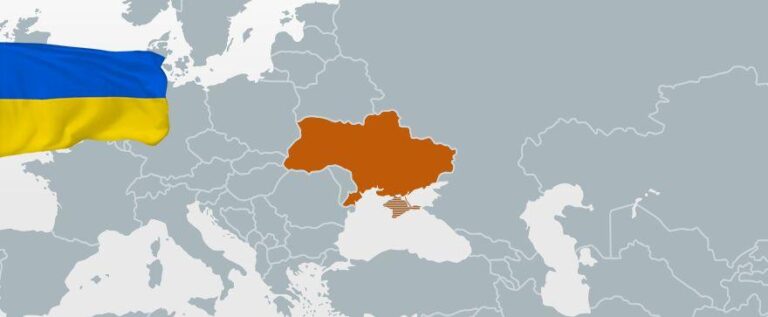Ukraine continues to intensify its offensive operations by targeting Russian airfields and war production facilities, as part of its ongoing efforts to undermine Moscow’s military capabilities. According to reports from Al Jazeera, these sustained attacks aim to disrupt the logistical and operational support crucial to Russia’s war efforts, marking a significant escalation in the conflict. This article examines the latest developments on the ground, the strategic implications of Ukraine’s strikes, and the broader impact on the military balance in the region.
Ukraine Targets Russian Airfields to Disrupt Military Operations
Ukrainian forces have intensified their focus on key Russian air bases, aiming to undermine Moscow’s ability to launch aerial operations in the region. Recent strikes have targeted critical infrastructure, including runways, fuel storage, and communication towers, significantly delaying Russian sortie capabilities. Military analysts note that this strategic pressure disrupts Russian aerial resupply and reconnaissance efforts, complicating Moscow’s broader tactical planning on the front lines.
The sustained campaign against these installations underscores Ukraine’s drive to elevate the cost of Russia’s war production and logistics. According to defense sources, Ukrainian precision attacks have:
- Damaged over 30 aircraft hangars;
- Destroyed key radar systems;
- Neutralized multiple ammunition depots;
- Impacted airfield repair capabilities.
Such actions indicate a deliberate strategy to cripple Russia’s aerial dominance and disrupt the supply chain supporting frontline operations.
| Target | Impact | Status |
|---|---|---|
| Belgorod Airfield | Runway Craters | Out of Service |
| Kursk Radar Station | Communication Disruption | Partially Operational |
| Voronezh Fuel Depot | Fuel Loss | Severe Damage |
Impact on Russia’s War Production and Supply Chains
Continuous strikes targeting Russian airfields and critical military infrastructure have significantly disrupted Moscow’s war production capabilities. Key logistics hubs experience persistent damage, causing delays in the manufacturing and deployment of essential military hardware. These attacks are straining Russia’s ability to maintain a steady flow of supplies to front-line units, leading to shortages in ammunition, spare parts, and fuel. Analysts report that this sustained pressure is forcing Russian factories to reroute supply chains and prioritize urgent repairs over new production, further compounding operational challenges on the battlefield.
Key effects observed include:
- Interruption of transportation routes crucial for moving raw materials and finished goods.
- Decrease in the output of precision-guided munitions due to damaged production lines.
- Increased vulnerability of supply depots to follow-up attacks, risking stockpile depletion.
| Category | Pre-Attack Status | Post-Attack Status |
|---|---|---|
| Airfield Operations | Operational 90% | Reduced to 60% |
| War Material Output | Stable & Increasing | Fluctuating & Declining |
| Supply Chain Reliability | Consistent | Highly Disrupted |
Strategic Recommendations for Strengthening Ukraine’s Aerial Campaign
To amplify the effectiveness of Ukraine’s aerial operations, target prioritization must be enhanced, focusing on not only airfields but also the intricate logistics chains sustaining Russian air power. Expanding the use of precision-guided munitions paired with real-time intelligence can significantly disrupt enemy sortie rates. Equally vital is improving electronic warfare capabilities to interfere with Russian air defense systems, opening corridors for deeper strikes into war production facilities. Coordination between drone reconnaissance and manned aircraft should also be intensified, enabling rapid target acquisition and continuous pressure on critical infrastructure.
Bolstering Ukraine’s aerial campaign requires an integrated approach combining technology and strategy. Recommendations include:
- Augmented sensor fusion: Integrate satellite, UAV, and ground-based data for comprehensive battlefield awareness.
- Increased sortie flexibility: Implement dynamic mission planning to adapt quickly to enemy movements.
- Enhanced pilot training: Emphasize electronic countermeasures and low-altitude penetration techniques.
- Supply chain disruption: Target spare parts depots and refueling points to degrade operational readiness.
| Key Focus Area | Recommended Action | Expected Impact |
|---|---|---|
| Airfield Targeting | Deploy precision missiles at runway entry points | Reduced sortie frequency and runway availability |
| Electronic Warfare | Jamming radar and communication systems | Increased enemy vulnerability during missions | Logistics Disruption | Strike supply routes and storage facilities | Hindered enemy resupply and maintenance efforts |
| Reconnaissance Coordination | Synchronize drone and manned aircraft operations | Faster target acquisition and mission adaptability |




